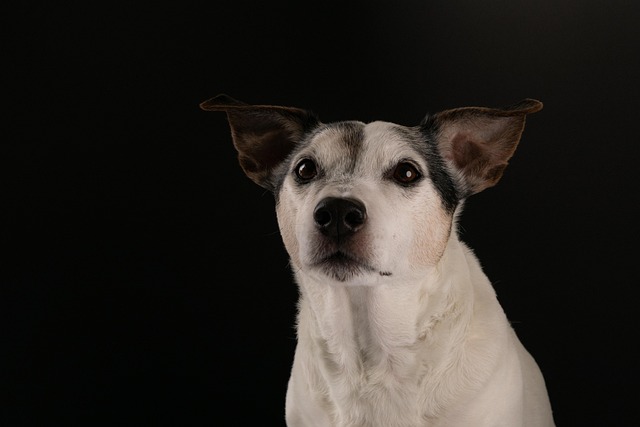
What is glaucoma in a dog?
You might notice your dog squinting more at mealtime or avoiding bright sunlight—these small changes could be early signs of a serious eye condition.
Your energetic dog, who just a day ago was chasing balls in the park, now lies listless with a swollen belly and labored breathing. That's the harsh reality parvovirus can bring to dog owners. This highly contagious virus, often simply called "parvo," isn't some random occurrence—it's a direct result of environmental exposure, inadequate vaccination, and sometimes, even human oversight. Let's dig into what really makes parvo tick.
At its core, the canine parvovirus type 2 (CPV-2) is a master of survival. This tiny, DNA-based virus can linger in the environment for months, even years, surviving extreme temperatures and common household cleaners. Think about that muddy paw print your dog tracked in from the neighborhood park or the communal water bowl at the doggy daycare. Those seemingly harmless spots can harbor parvo particles shed by infected dogs through feces, and once your pet comes into contact, it's game on. Puppies are especially vulnerable because their developing immune systems can't fend off the rapid replication of the virus in their intestines and heart muscles.
 But here's where human responsibility kicks in. In many regions, local animal control laws mandate rabies vaccinations, yet they often leave room for pet owners to decide on other crucial shots like the parvovirus vaccine. This isn't a suggestion—it's a non-negotiable. Some owners skip booster shots, thinking "one vaccine is enough," or delay vaccinations due to concerns about side effects. That's a dangerous gamble. Regulatory bodies recommend a series of parvo vaccinations starting at 6 - 8 weeks of age, followed by regular boosters throughout your dog's life. Skipping these not only puts your dog at risk but can also violate local animal welfare codes in areas that enforce comprehensive vaccination records for public spaces.
But here's where human responsibility kicks in. In many regions, local animal control laws mandate rabies vaccinations, yet they often leave room for pet owners to decide on other crucial shots like the parvovirus vaccine. This isn't a suggestion—it's a non-negotiable. Some owners skip booster shots, thinking "one vaccine is enough," or delay vaccinations due to concerns about side effects. That's a dangerous gamble. Regulatory bodies recommend a series of parvo vaccinations starting at 6 - 8 weeks of age, followed by regular boosters throughout your dog's life. Skipping these not only puts your dog at risk but can also violate local animal welfare codes in areas that enforce comprehensive vaccination records for public spaces.
Community living amplifies the risk. Urban dwellers with dogs know the drill: crowded sidewalks, shared dog runs, and frequent visits to groomers. These social hubs are breeding grounds for parvo. It only takes one asymptomatic carrier—a dog that looks healthy but is shedding the virus—to contaminate an entire area. That's why many local parks and doggy daycares now require proof of current vaccinations. Failure to comply doesn't just put your pet at risk; it could lead to fines or being banned from these public amenities.
Let's talk about the silent spreaders in our homes. Parvo can hitch a ride on our shoes, clothing, or even pet toys. You might unknowingly bring the virus home after visiting a friend's house with an unvaccinated dog. This is why biosecurity matters—cleaning your dog's gear regularly, disinfecting with parvovirus-specific cleaners (not just regular soap), and avoiding contact with unknown dogs until your pet's vaccination schedule is complete.
The good news? Parvo is preventable. By staying vigilant about vaccinations, practicing strict hygiene, and respecting local pet regulations, you're not just protecting your dog—you're contributing to the health of the entire canine community. Next time you see a "vaccination required" sign at the dog park, remember: it's there for a reason. Because when it comes to parvo, an ounce of prevention truly is worth a pound of cure.

You might notice your dog squinting more at mealtime or avoiding bright sunlight—these small changes could be early signs of a serious eye condition.

Let’s set the scene: It’s a sweltering Phoenix afternoon—105°F outside—and you rushed your 2-year-old Lab mix, Cooper, on a quick walk to “get it over with.”

Let’s get real: You’re in your Miami apartment, watching your 3-year-old Corgi, Loki, struggle to climb the stairs to your second-floor unit.

Many dog owners brush off occasional scratching as just “dog behavior,” but persistent itching often signals something more—like a food allergy.

You might first notice your dog scratching more than usual—chewing at their paws until the fur looks thin, or rubbing their face against the couch nonstop.

Let’s be real: You’re standing in your Chicago apartment, watching your 3-year-old Beagle, Max, huff and puff just to climb onto the couch.